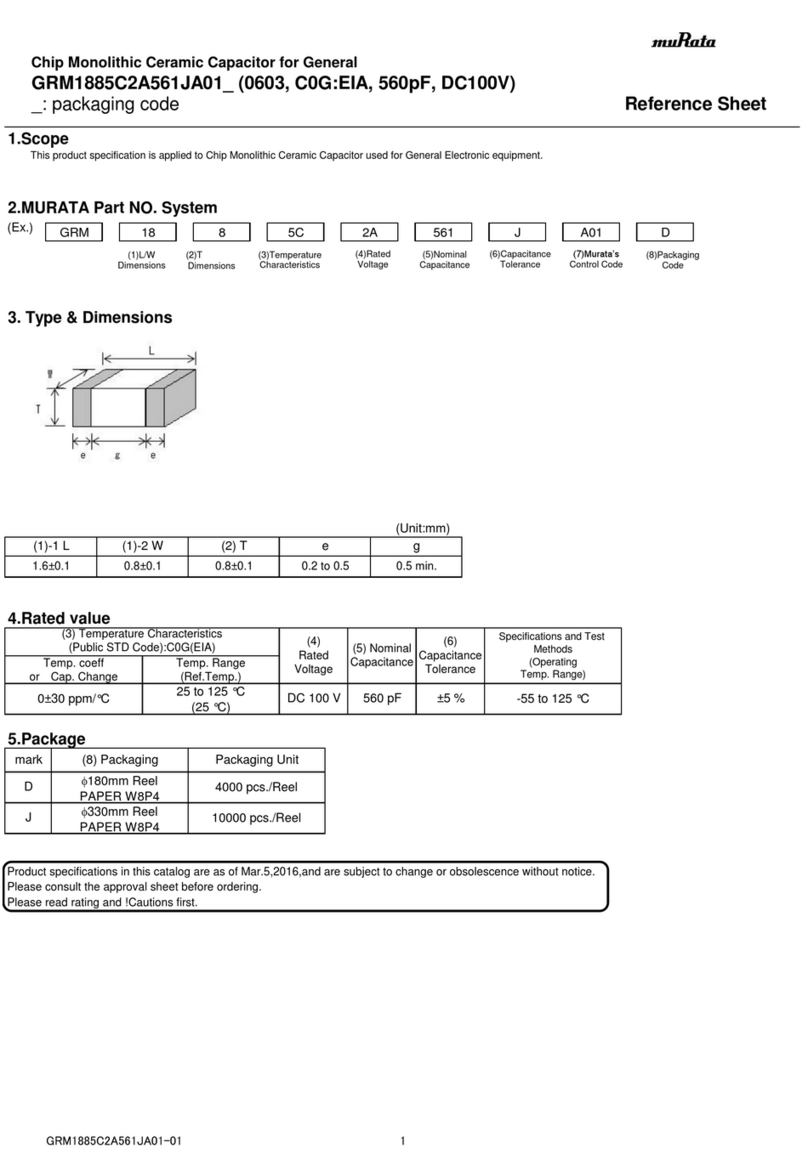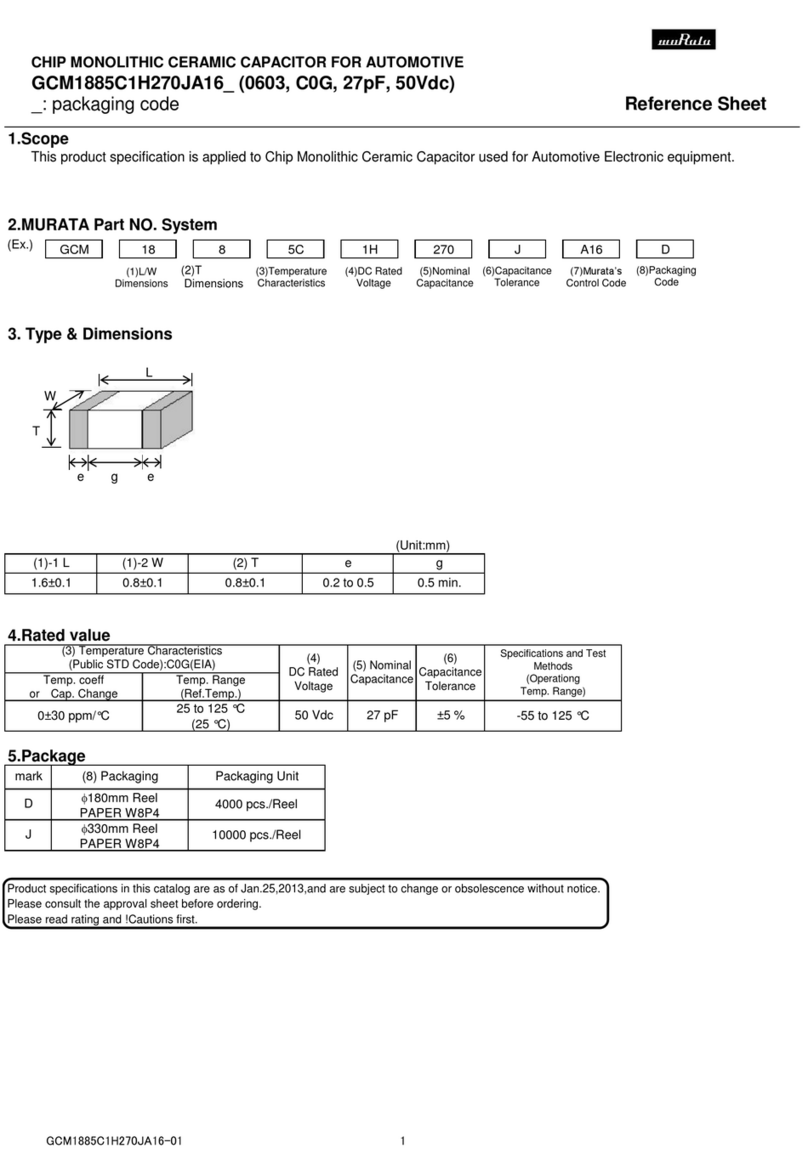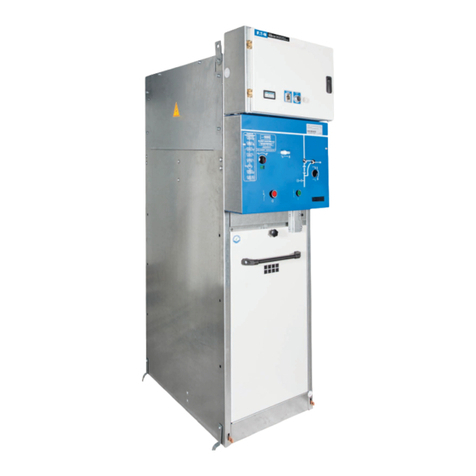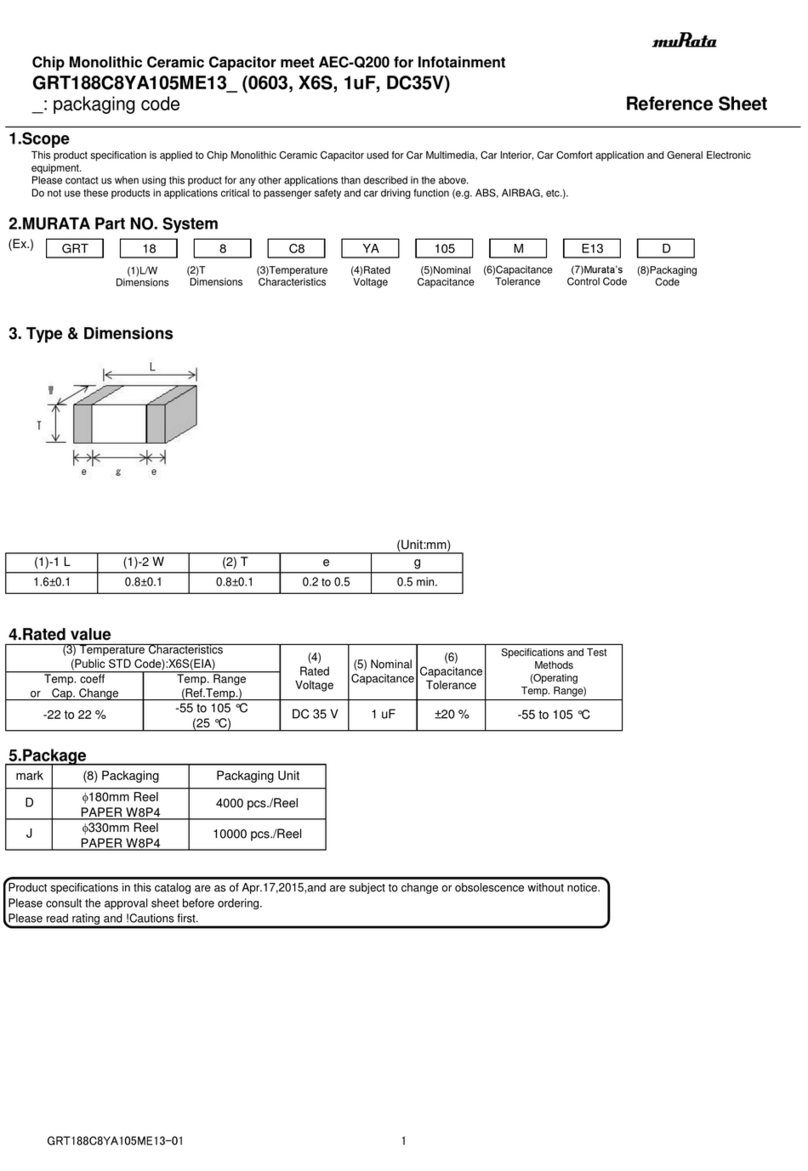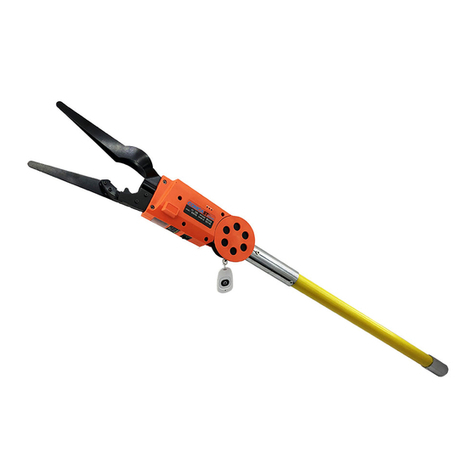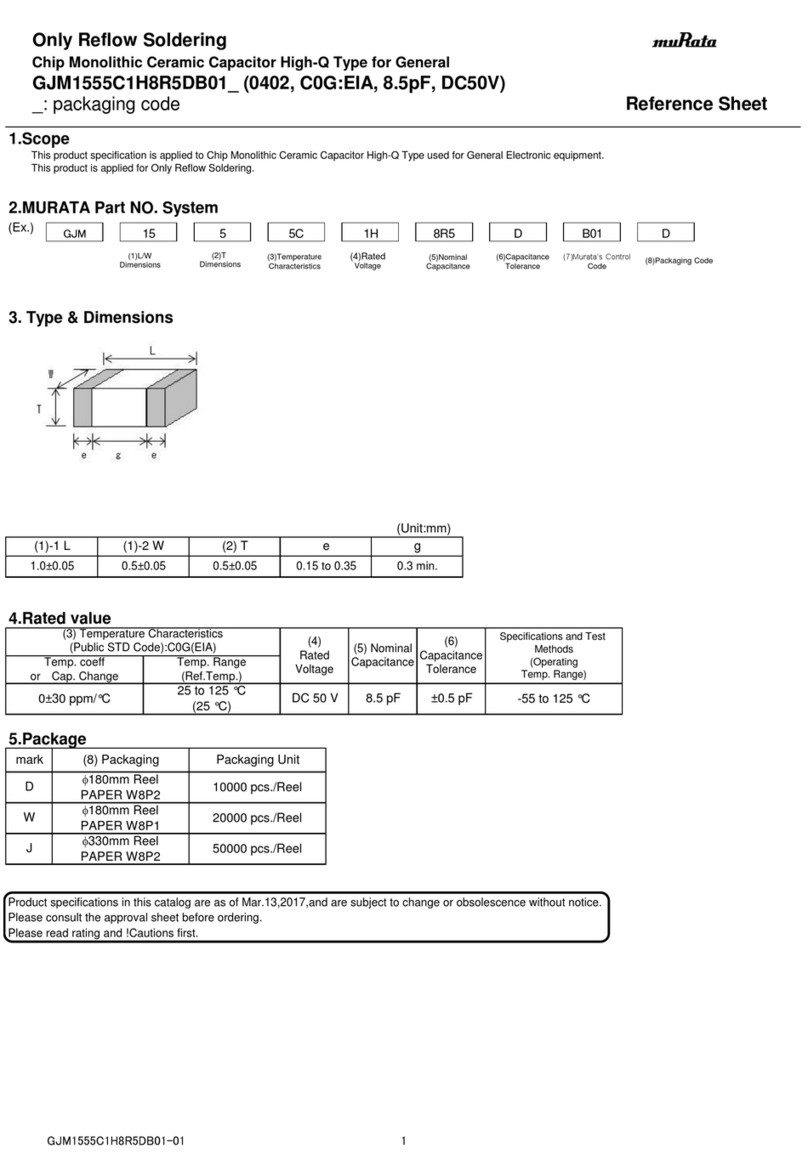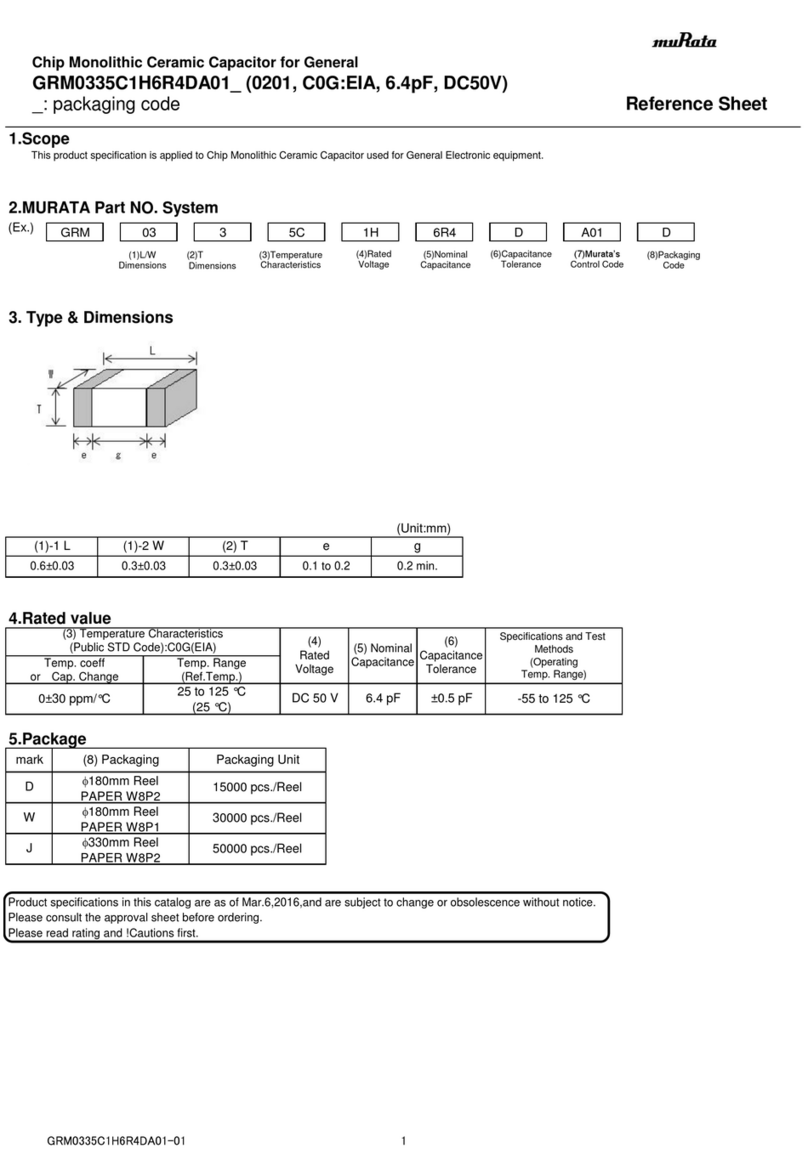Startco SE-701 User manual

SE-701 MANUAL
GROUND-FAULT MONITOR
DECEMBER 19, 2000
REVISION 4
Copyright © 2000 by Startco Engineering Ltd.
All rights reserved.
Publication: SE-701-M
Document: S95-C701-00000
Printed in Canada.

Blank Page

Startco Engineering Ltd. Page i
SE-701 Ground-Fault Monitor Rev. 4
Pub. SE-701-M, December 19, 2000.
TABLE OF CONTENTS
PAGE
Table of Contents...................................................................i
List of Figures ........................................................................i
1. General......................................................................1
2. Operation..................................................................1
2.1 Configuration-Switch Settings...................................1
2.1.1 Relay Operating Mode ...................................1
2.1.2 Inhibit..............................................................1
2.1.3 CT Verification...............................................1
2.1.4 Filter Selection................................................1
2.1.5 Autoreset.........................................................1
2.2 Front-Panel Controls..................................................1
2.2.1 Ground-Fault Trip Level ................................1
2.2.2 Ground-Fault Trip Time.................................1
2.2.3 Reset ...............................................................1
2.2.4 Test .................................................................3
2.3 Front-Panel Indication ...............................................3
2.3.1 Power ..............................................................3
2.3.2 Ground-Fault Trip ..........................................3
2.3.3 Inhibit..............................................................3
2.4 Analog Output ...........................................................3
3. Installation................................................................3
4. Technical Specifications..........................................3
5. Ordering Information .............................................5
LIST OF FIGURES
FIGURE PAGE
1 SE-701 Outline and Mounting Details...................... 2
2 Typical Connection Diagram.................................... 4
3 EFCT-1 Outline and Mounting Details .................... 6
4 EFCT-2 Outline and Mounting Details .................... 7
5 PMA-55 Panel-Mount Adapter................................. 8
DISCLAIMER
Specifications are subject to change without notice. Startco
Engineering Ltd. is not liable for contingent or
consequential damages, or for expenses sustained as a result
of incorrect application, incorrect adjustment, or a
malfunction.

Blank Page

Startco Engineering Ltd. Page 1
SE-701 Ground-Fault Monitor Rev. 4
Pub. SE-701-M, December 19, 2000.
1. GENERAL
The SE-701 is a microprocessor-based ground-fault
monitor for resistance-grounded and solidly grounded
systems. Its output relay can operate in the fail-safe or non-
fail-safe mode for undervoltage or shunt-trip applications,
and the output contacts are isolated for use in independent
control circuits. Additional features include LED and
fluorescent-flag trip indication, autoreset or latching trips
with front-panel and remote reset, self test, 0 to 5-V analog
output, inputs for standard and sensitive ground-fault
current transformers, CT verification for sensitive current
transformers, digital selector switches, switch-selectable
algorithms for fixed-frequency or variable-frequency
applications, and an inhibit that can be enabled to prevent
the output relay from operating during a high-current
ground fault.
Ground-fault current is sensed by a standard CT with a
1-A or 5-A secondary, or by a sensitive CT with a 5-A-
primary rating (EFCT-1 or EFCT-2). The trip level of the
ground-fault circuit is digital-switch selectable in 1%
increments from 1% to 99% of the CT-primary rating. Trip
time is digital-switch selectable with 10 settings from 0.05
to 2.5 s.
2. OPERATION
2.1 CONFIGURATION-SWITCH SETTINGS (See Fig. 1)
2.1.1 RELAY OPERATING MODE
The SE-701 has one output relay with isolated normally
open and normally closed contacts. Switch 1 is used to set
the operating mode of the output relay. In the fail-safe
mode, the output relay energizes when the ground-fault
circuit is not tripped. In the non-fail-safe mode, the output
relay energizes when a ground-fault trip occurs.
2.1.2 INHIBIT
Switch 2 is used to select Class I or Class II operation. In
the INHIBIT OFF position, high-current inhibit is off for
Class I operation. In the INHIBIT ON position, high-
current inhibit is on for Class II operation. If high-current
inhibit is on and ground-fault current escalates above eleven
times the CT-primary rating before the ground-fault circuit
trips, the output relay will not operate until ground-fault
current falls below eight times the CT-primary rating. This
feature allows the overcurrent protection to operate in
applications where the ground-fault current can be larger
than the interrupting capacity of the device tripped by the
SE-701.
2.1.3 CT VERIFICATION
Switch 3 is used to enable CT verification with the
EFCT-1 or EFCT-2. In the CT VERIFY ON position, a
trip will occur if the CT is disconnected. The red LED will
flash to indicate a trip initiated by a CT fault. Switch 3 must
be in the CT VERIFY OFF position when a 5-A- or 1-A-
secondary CT is used.
2.1.4 FILTER SELECTION
Switch 4 is used to select the filtering algorithm for a
fixed-frequency (50/60 Hz) or variable-frequency
application. The fixed-frequency algorithm allows lower
trip levels to be used by rejecting harmonics that can cause
nuisance tripping. The variable-frequency setting should be
used if the CT is located on the load side of a variable-
frequency drive.
2.1.5 AUTORESET
Switch 5 is used to select autoreset or latching trips. See
2.2.3.
2.2 FRONT-PANEL CONTROLS
2.2.1 GROUND-FAULT TRIP LEVEL
The % CT PRIMARY selector switches are used to set
the ground-fault trip level as a percentage of the CT-primary
rating. Protection against arcing ground faults in a solidly
grounded system requires a ground-fault CT that will not
saturate below the operating value of the overcurrent
protection. For reliable ground-fault detection, the ground-
fault trip level must be substantially below the prospective
ground-fault current. To avoid sympathetic tripping, the
trip level must be above the charging current of the largest
feeder; and to eliminate nuisance tripping, surge current
must not saturate the CT. See Startco Technical
Information 11.1 available at www.startco.ca.
2.2.2 GROUND-FAULT TRIP TIME
The TIME (s) selector switch is used to set the ground-
fault trip time for coordination with upstream and
downstream ground-fault devices. Coordination requires
the same trip level for all ground-fault devices in a system
and the trip time to progressively increase upstream. The
amount of equipment removed from the system will be a
minimum if the first ground-fault device to operate is the
one immediately upstream from the fault.
2.2.3 RESET
The reset circuit responds only to a momentary closure so
that a jammed or shorted switch will not prevent a trip. The
front-panel RESET switch is inoperative when the remote-
reset terminals (6 and 7) are shorted.

Startco Engineering Ltd. Page 2
SE-701 Ground-Fault Monitor Rev. 4
Pub. SE-701-M, December 19, 2000.
FIGURE 1. SE-701 Outline and Mounting Details.

Startco Engineering Ltd. Page 3
SE-701 Ground-Fault Monitor Rev. 4
Pub. SE-701-M, December 19, 2000.
If Switch 5 is in the LATCHING position, a trip remains
latched until the RESET switch is pressed, the remote-reset
terminals are momentarily shorted, or the supply voltage is
cycled. Cycling the supply voltage will not reset (black) the
fluorescent flag.
If Switch 5 is in the AUTORESET position, a trip will
reset when the fault is removed. The fluorescent flag will
not reset until the RESET switch is pressed or the remote-
reset terminals are momentarily shorted. Cycling the supply
voltage will not reset the fluorescent flag unless the remote-
reset terminals are shorted.
If Switch 5 is in the AUTORESET position and the
remote-reset terminals are shorted, operation is the same as
for older SE-701’s with the A1 or A2 option.
2.2.4 TEST
The TEST switch is used to test the ground-fault circuit,
the indication, and the output relay. When the TEST switch
is pressed for one second; the circuit will trip, trip indication
will come on, and the output relay will operate. If high-
current inhibit has been selected, the inhibit indicator will
come on.
2.3 FRONT-PANEL INDICATION
2.3.1 POWER
The green LED labeled PWR indicates presence of the
supply voltage.
2.3.2 GROUND-FAULT TRIP
The red LED and the fluorescent flag, labeled TRIP,
indicate a trip. A solid red LED indicates a ground-fault
trip and a flashing LED indicates a trip initiated by a CT
fault.
2.3.3 INHIBIT
The yellow LED labeled INHB indicates that output-
relay operation was inhibited during a high-current ground
fault. Inhibit indication is reset when the ground-fault trip is
reset. Inhibit operation and indication will not respond if
Switch 2 is in the INHIBIT OFF position.
2.4 ANALOG OUTPUT
The non-isolated, 0 to 5-V analog output indicates
ground-fault current sensed by the ground-fault CT. The
output is 5 V at 100% of the CT-primary rating.
3. INSTALLATION
Pass the phase conductors through the CT window as
shown in Fig. 2 (for 4-wire and single-phase systems, also
pass the neutral conductor through the CT window). Do not
pass ground conductors through the CT window. In
applications that require shields or drain wires to pass
through the CT window, return them through the CT
window before connecting them to ground. If a ground-
fault CT with a 5-A secondary is used, connect it to
terminals 2 and 3 (terminals 1 and 3 with a 1-A secondary)
and ground terminal 3. If the EFCT-1 or EFCT-2 is used,
connect it to terminals 4 and 5, connect the shield to
terminal 5, and ground terminal 5. Remove the connection
to terminal 9 for dielectric-strength testing—all inputs and
outputs have ANSI/IEEE C37.90 surge-protection circuits
that conduct above 300 Vac.
4. TECHNICAL SPECIFICATIONS
Supply:
01 Option..............................120 Vac (+15%, -40%),
50/60 Hz, 2.5 VA
02 Option..............................240 Vac (+15%, -40%),
50/60 Hz, 2.5 VA
03 Option..............................24 Vac (+15%, -40%),
50/60 Hz, 2.5 VA
0S Option ............................. 120 or 240 Vac (+15%,
-40%), 50/60 Hz, 2.5 VA
0U Option............................. 55 to 275 Vac, 50/60 Hz,
3.5 VA
75 to 275 Vdc, 2.0 W (1)
0D Option.............................9 to 36 Vdc, 3.0 W (1)
0T Option .............................30 to 70 Vdc, 3.0 W (1)
(1) CSA Certification pending.
Dimensions:
Height...................................75 mm (3.0")
Width....................................55 mm (2.2")
Depth....................................115 mm (4.5")
Shipping Weight..........................0.45 kg (1 lb.)
Trip-Level Range.........................1% to 99% CT-Primary
Rating in 1% increments
(50 mA to 4.95 A with
EFCT-1 or EFCT-2)
Trip-Time Settings....................... 0.05, 0.10, 0.20, 0.30,
0.40, 0.50, 1.0, 1.5, 2.0,
and 2.5 s
Accuracies:
Trip Level.............................+1%, -5% of trip level for
settings ≥10%.
+0.1%, -0.5% of full scale
for settings ≤9%.
Trip Time .............................+15 ms, -25 ms

Startco Engineering Ltd. Page 4
SE-701 Ground-Fault Monitor Rev. 4
Pub. SE-701-M, December 19, 2000.
FIGURE 2. Typical Connection Diagram.

Startco Engineering Ltd. Page 5
SE-701 Ground-Fault Monitor Rev. 4
Pub. SE-701-M, December 19, 2000.
Inhibit:
Off........................................ Class I
On ........................................ Class II
Level............................. 11 x CT-Primary Rating
Input:
Algorithms ........................... DFT Digital or Peak
Digital Filter......................... 50 to 60 Hz, Bandpass
CT ........................................ 1-A or 5-A Secondary
Rating, EFCT-1,
or EFCT-2
Thermal Withstand:
Continuous ................... 5 x CT-Secondary Rating
1-Second....................... 80 x CT-Secondary
Rating
Burden ................................. < 0.01 Ωfor 5-A input
< 0.05 Ωfor 1-A input
Operating Mode .......................... Latching or Autoreset
Analog Output:
Range ................................... 0 to 5 V, 5 V = 100%
Output Impedance ............... 220 Ω
Reset............................................ Front-Panel Switch and
Remote, N.O. Contact
Functional Test............................ Front-Panel Switch
Output Relay:
Contact Rating .................... 8 A Resistive,
250 Vac/30 Vdc
Contact Configuration ........ Isolated N.O. and N.C.
Operating Mode................... Fail-Safe or Non-Fail-Safe
Supplemental Contact Ratings:
Make/Carry 0.2 s ................20 A
Carry Continuous................8 A
Break:
dc .................................30 W Resistive,
15 W Inductive
(L/R = 0.4 s)
ac................................. 2000 VA Resistive
1400 VA Inductive
(PF = 0.4)
Subject to maximums of 8 A and 250 V (ac or dc).
Environment:
Operating Temperature ........-40°C to 60°C
Storage Temperature............-55°C to 80°C
Humidity...............................85% Non-Condensing
Surge Withstand ..........................ANSI/IEEE 37.90.1-1989
(Oscillatory and Fast
Transient)
Certification .................................CSA NRTL/C
(Canada & USA)
5. ORDERING INFORMATION
SE-701-0 — 1 120-Vac Supply
2 240-Vac Supply
3 24-Vac Supply
S 120- or 240-Vac Supply
U Universal ac/dc Supply
D 9- to 36-Vdc Supply
T 30- to 70-Vdc Supply
EFCT-1 ............Sensitive Ground-Fault CT, 5-A Primary
Rating, 82-mm (3.2") Window
EFCT-2 ............Sensitive Ground-Fault CT, 5-A Primary
Rating, 155-mm (6.1”) Window
EFCT-1FC .......Flux Conditioner, 70 mm (2.7”) Window
EFCT-2FC .......Flux Conditioner, 139 mm (5.5”) Window
PMA-55 ...........Panel-Mount Adapter
SE-EFVC.........Voltage Clamp
Consult factory for custom mounting adapters.
LR 53428
NRTL /C

Startco Engineering Ltd. Page 6
SE-701 Ground-Fault Monitor Rev. 4
Pub. SE-701-M, December 19, 2000.
FIGURE 3. EFCT-1 Outline and Mounting Details.

Startco Engineering Ltd. Page 7
SE-701 Ground-Fault Monitor Rev. 4
Pub. SE-701-M, December 19, 2000.
FIGURE 4. EFCT-2 Outline and Mounting Details.

Startco Engineering Ltd. Page 8
SE-701 Ground-Fault Monitor Rev. 2
Pub. SE-701-M, December 19, 2000.
FIGURE 5. PMA-55 Panel-Mount Adapter.
Other manuals for SE-701
2
Table of contents
Popular Industrial Electrical manuals by other brands

Lindorm, Inc.
Lindorm, Inc. SediMeter SM3 manual
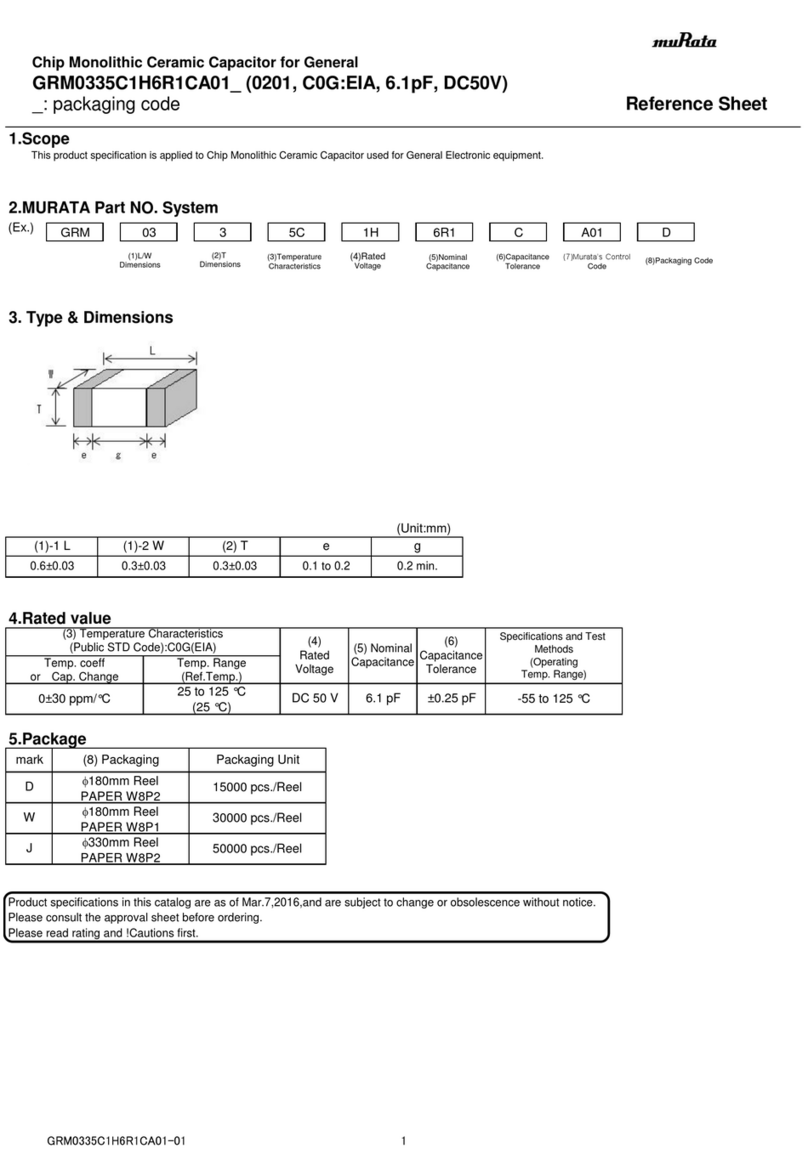
Murata
Murata GRM0335C1H6R1CA01 Series Reference sheet
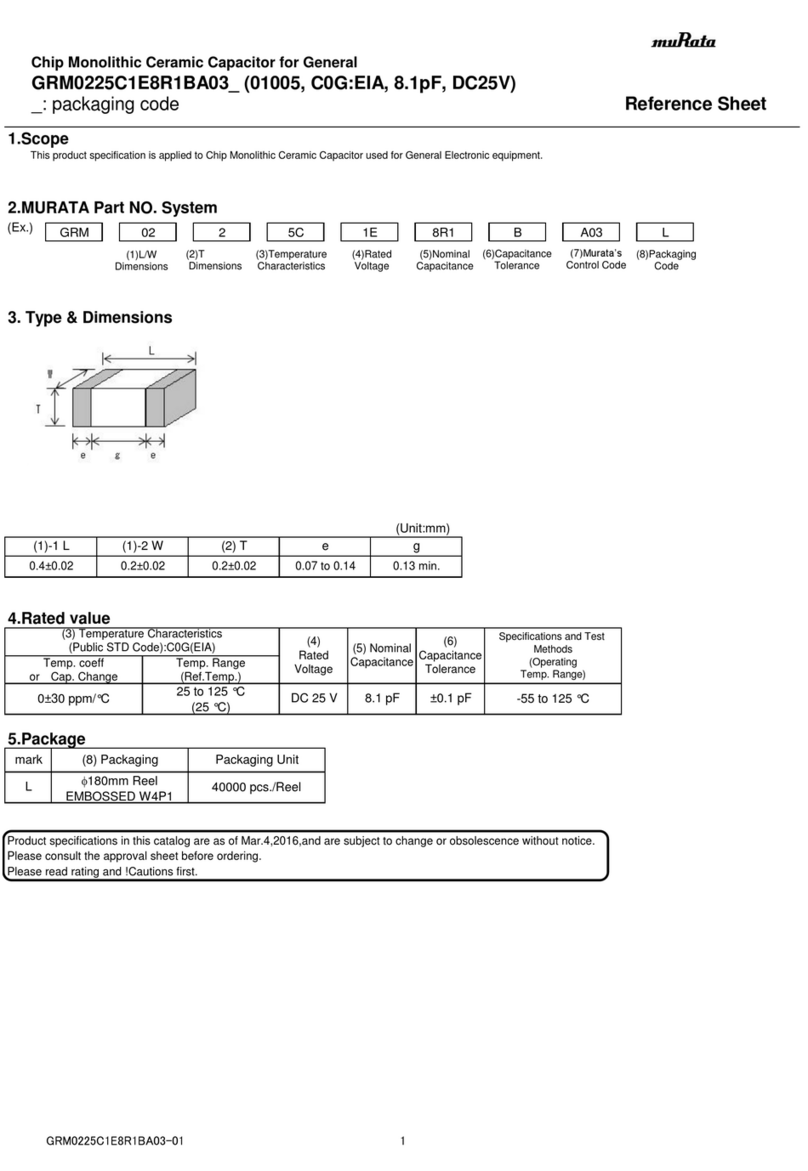
Murata
Murata GRM0225C1E8R1BA03 Series Reference sheet
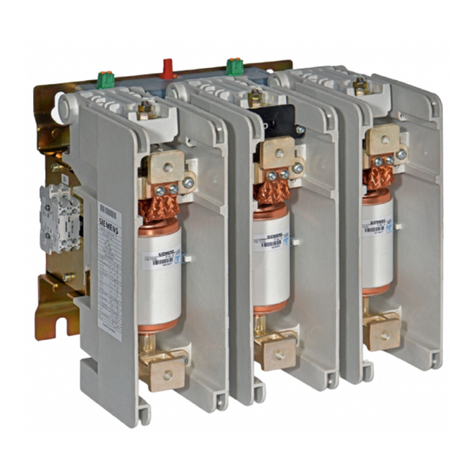
Siemens
Siemens 3TM operating instructions

Lucent Technologies
Lucent Technologies Lineage 2000 ECS Battery Plant product manual
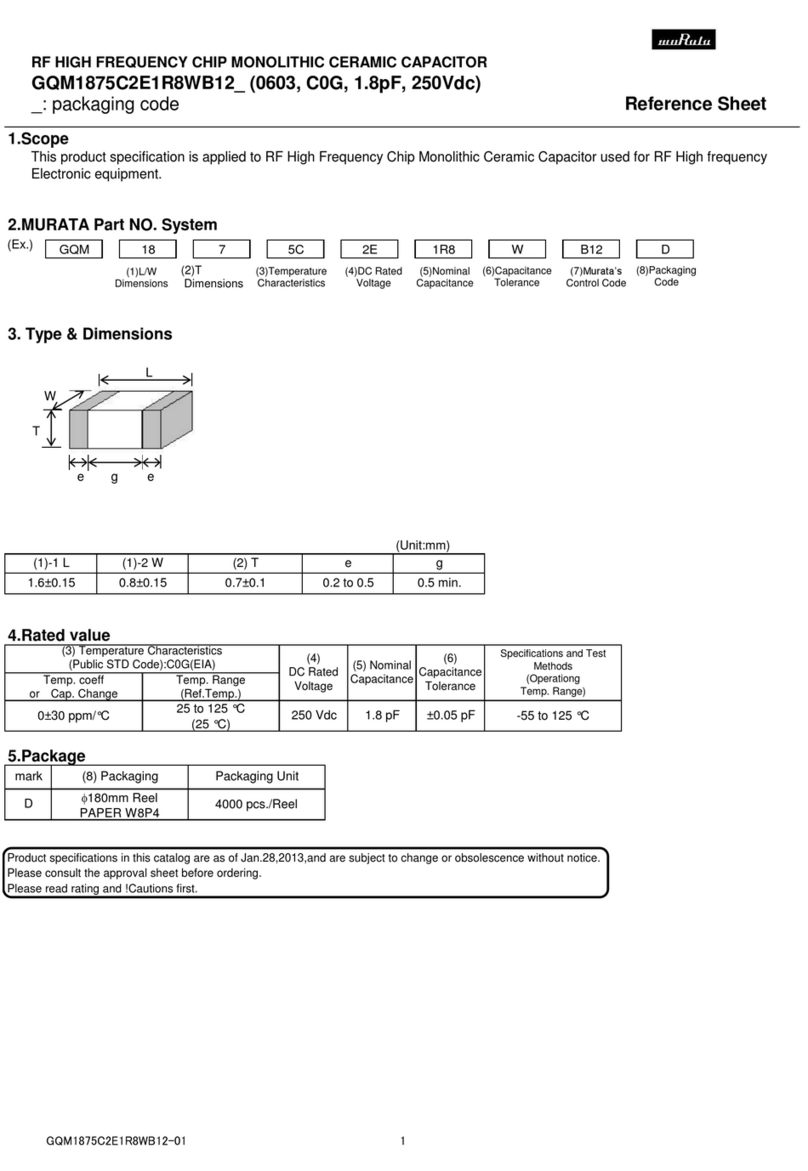
Murata
Murata GQM1875C2E1R8WB12 Series Reference sheet
